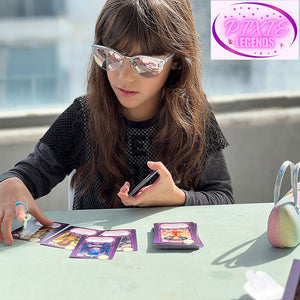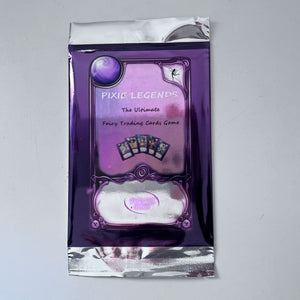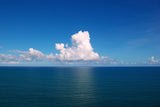Are you a sucker for mystical creatures like we are? Say no more because you are going to be hooked with this one! Fairies have recently been associated with beautiful, petite, winged human-like women. The reality is quite different, and we are going to enlighten you with different fairies’ enthralling individuality.
Fairies, also known as Faeries might be confused by a lot of people. Some say Faeries are evil creatures and Fairies are pure-hearted creatures. However, faeries is old french for ‘fairies’ which is a middle English term, originating from a Latin word ‘Fatum’ meaning ‘fate’. Now, let’s dive straight into what we’re here for.
Types of Fairies
Most of the fairy and folktales we are obsessing over are originated from Scottish, Irish, and British legends. We encounter different types of fairies, contrary to popular beliefs: winged and unwinged, male and female, light and dark, and good and evil. They reside in every sort of environment, from clouds to water to earth.
Owing to the millions of legends brought in over the centuries, mentioning all could be impossible. But we still managed to include all your favorites!
1. Earth Fairies
a. Pixies
Pixie Fairies are the first thing that comes to our mind when we think about fairies, thanks to the Disney famous, Tinker bell. They are very small, about 4 feet, with pointed ears, and are usually dressed in green. Each pixie fairy has its individual characteristics; where some are known to be happy spirits, some are perceived as very mischievous.
The word Pixilated is proof of the widely known quality of Pixies who used to find delight in leading travelers astray and scaring maidens. Their hobbies include dancing in the moonlight to the sound of crickets and frogs. If you ever want a pixie to pay you a visit, make sure to make your home pretty with nature and a woodsy interior. What’s perfect is a little Pixie Dust Dream cottage!
b. Elves
Another mainstream character filled in Fantasy movies and novels. Their origin was in German mythology and ever since Elves have been depicted with different versions across the pop culture. They are the closest looking to humans but with pointed ears but some are either very small and some very tall (different folklores). Many legends also describe them as very mesmerizing and beautiful.
Elves have various communities and each of them has its own territory i.e. forests. They are known to be protectors of the forests and therefore possess brilliant fighting properties and smart strategies. J.R.R’s famous masterpiece, Lord of the Rings, portrayed these qualities exceptionally.
c. Gnomes
You probably associate gnomes with gardens, right? The Garden industry has made us all perceive gnomes as small joyful bearded men with round bodies, colorful clothes, and pointed hats. In this modern era, we all probably think their work/hobby is to help around in people’s gardens. Let’s see how it was back in the days.

In the 16th to 19th Century, gnomes were only talked about as ugly small bearded men who hated human interaction. Hence, they lived underground and their only occupation was mining. They were seen as protectors of the treasure because of their trustworthiness.
Water Fairies
a. Merfolk
Mermaids and Merman, the all-time hit topic of pop culture. In movies, we have seen merfolk as both evil and virtuous. The half-human, half-fish beings have gained much popularity after Disney’s, ‘The Little Mermaid’. It definitely arose an overwhelming desire to be able to breathe in water like those lucky creatures.
Traditionally, merfolk was rumored to be evil, luring sailors to death. They were able to do that with their breathtaking beauty and hypnotizing voice, which seemingly was irresistible. The mermen were also widely believed to cause storms in the ocean for the sole purpose of drowning sailors.
b. Will o Wisp
Have you ever been strolling through the woods just to pass by a lake with countless little flickering beams of dots all over it? Should have paid close attention because that is exactly how Will o Wisps look like! You can always glow your room with fairy lights and imagine having these little sparkles surrounding you.
Will o wisps have different names in different cultures and their folklores. They are usually said to be found in still and quiet waters than rough ones, so more of them inhabit lakes and ponds than the sea. Some legends even say that that they reside in woodlands and hills. If you ever find them, they will always be in groups.
Other Earth and Water Fairies
a. Brownies
Typically originated from Scottish folklore and sometimes in British and German too, they are a good luck charm for everyone around them. These small 3 feet creatures with pointy ears are one of the most helpful of the fairyland. When any deserving family requires any help, they’re always ready to help in all outdoorsy activities, mainly farming.
b. Salamanders
The unique thing about these not-so-popular fairies is that they are recognized as fire elementals. They take the form of red and orange lizards but are also known to shift as a fire fairy or a ball of fire. Evil Witches are known to benefit from Salamanders due to their fire source. However, it’s risky to take help from them as they can turn evil anytime they feel mistreated.
b. Nymphs
Nymphs are a diverse form of fairies. They might reside in water, trees, or woods. Mainly famous for their beauty and hyper-sexuality, they were known to captivate humans and fall in love with them too, in a serious committed relationship.
Final Words
The more you look for, the more you will find. Hope your fairy appetite is fulfilled at this point. These cultural folklores have created a whole magical escape for us and we could not be more thankful. Let’s all hope the pop culture never stops creating different variations of these fairytales for our imaginations.
And as a famous fairy says,” All you need is faith, trust, and little pixie dust”. Wishing fairy dust to all of you!









